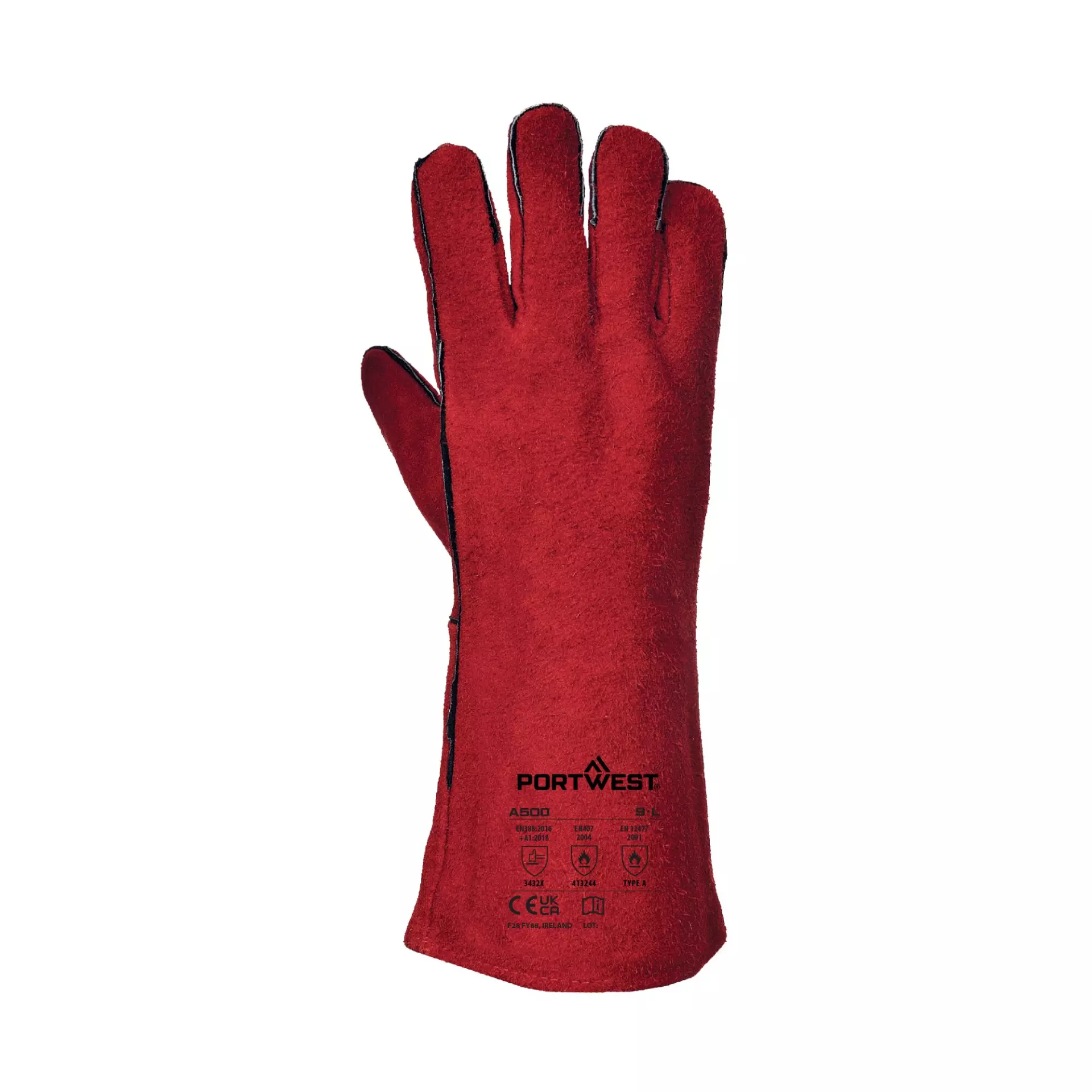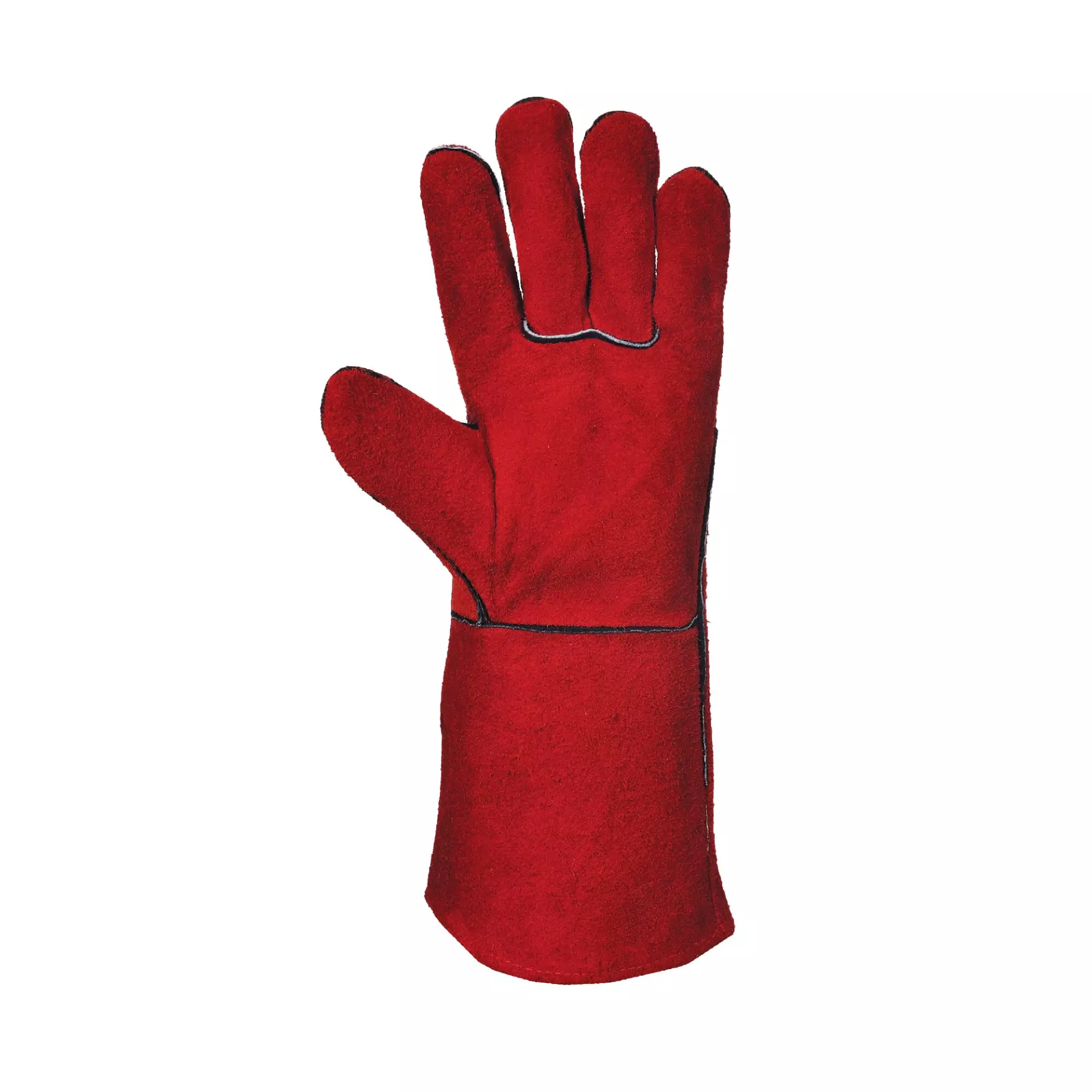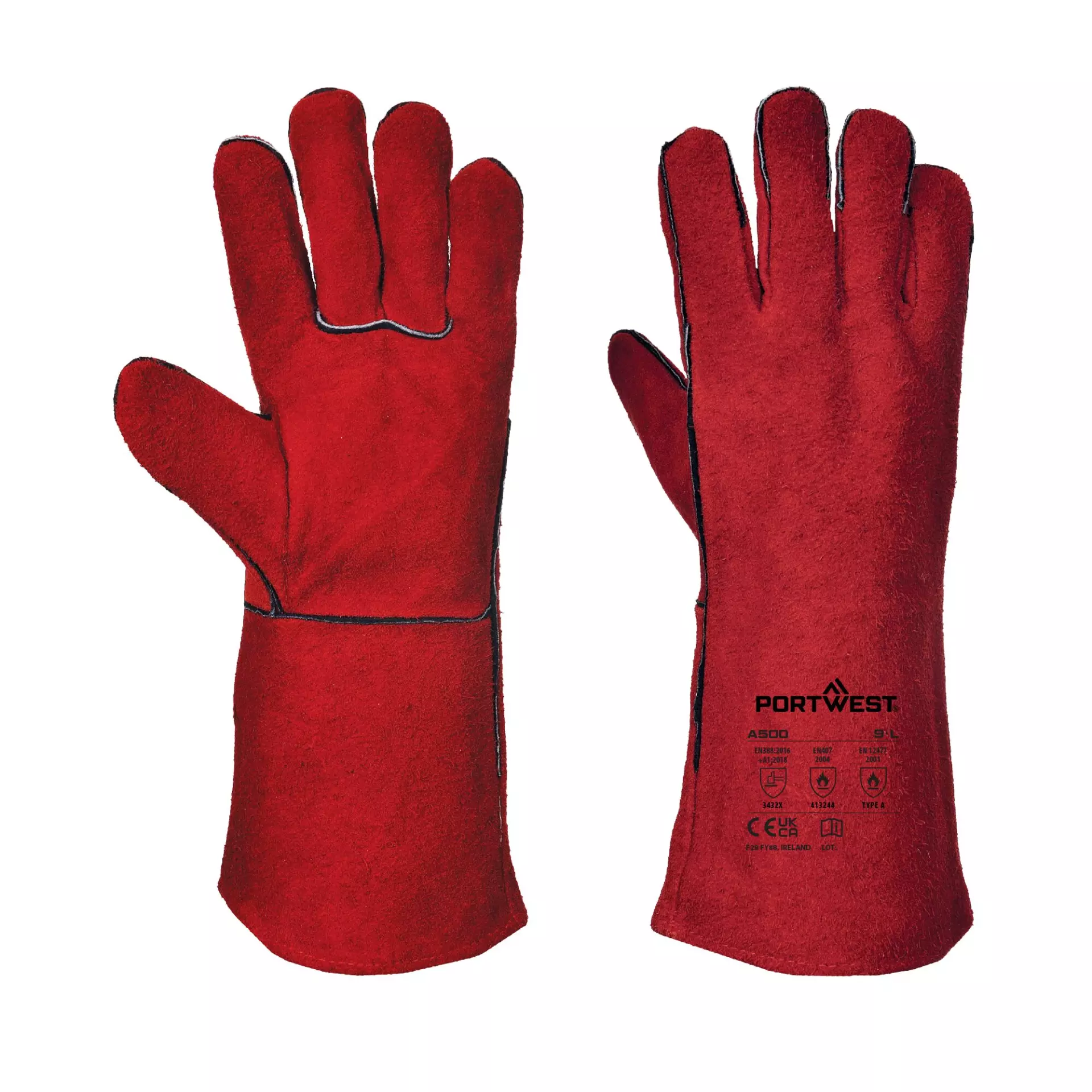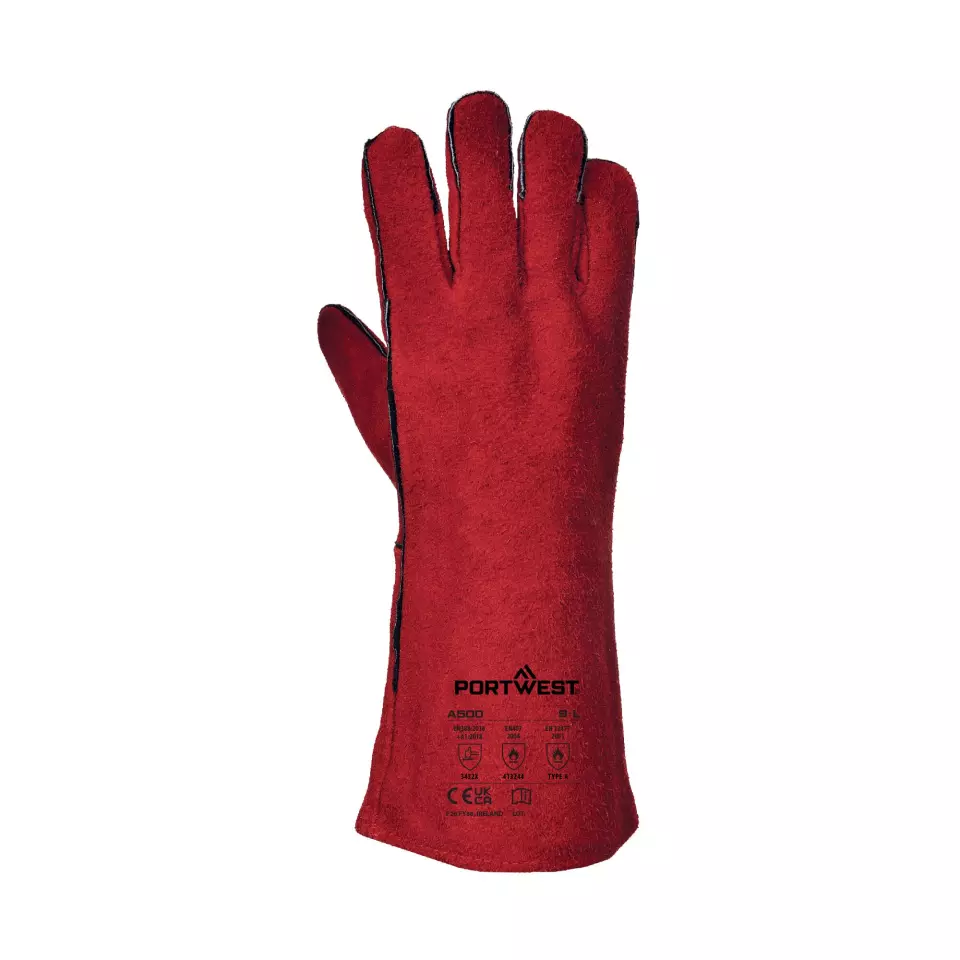


Features You'll Love

EN 388 · Abrasion Resistance Level 3
EN 407 · Metal Splash Resistance Level 4, Molten Metal Resistance Level 2, Heat Contact Level 1
Provides good resistance against scraping, scratching, and rubbing on rough or abrasive surfaces.
Offers the highest protection (Level 4) from large splashes of molten metal, withstanding up to 200 grams. This provides critical safety for high-risk jobs like welding or foundry work where significant contact with molten metal is possible.
Offers certified protection from large splashes of molten metal. This product is tested to withstand up to 60 grams of molten iron, providing safety for tasks like foundry work where significant splashes are a risk.
This product provides short-term protection against contact with hot objects up to 100°C (212°F) for at least 15 seconds. It is ideal for brief handling of warm items in non-professional settings like home kitchens.
Portwest
Welders Gauntlet, Red, 6 pairs
Welders Gauntlet, Red, 6 pairs
5 / 5
44,52 €
Price per 6 pairs
7,42 € / pair
Choose size
Shipping fee is 7,95 € for orders under 80,00 €
Features You'll Love

EN 388 · Abrasion Resistance Level 3
EN 407 · Metal Splash Resistance Level 4, Molten Metal Resistance Level 2, Heat Contact Level 1
Provides good resistance against scraping, scratching, and rubbing on rough or abrasive surfaces.
Offers the highest protection (Level 4) from large splashes of molten metal, withstanding up to 200 grams. This provides critical safety for high-risk jobs like welding or foundry work where significant contact with molten metal is possible.
Offers certified protection from large splashes of molten metal. This product is tested to withstand up to 60 grams of molten iron, providing safety for tasks like foundry work where significant splashes are a risk.
This product provides short-term protection against contact with hot objects up to 100°C (212°F) for at least 15 seconds. It is ideal for brief handling of warm items in non-professional settings like home kitchens.
Product description
Professional 14-inch split leather gauntlet designed for welding and metal handling applications requiring heat protection. Features full cotton lining for comfort and meets multiple safety standards including EN 12477 Type A welding protection and maximum EN 407 burn behavior resistance. The durable cow split leather construction provides reliable protection against heat-related hazards while maintaining necessary dexterity for precision work.
Product Features:
- 14-inch cow split leather construction
- Fully lined with soft cotton for comfort
- Durable leather construction
- CE certified
- Maximum burn behavior resistance
Technical Details:
- EN ISO 21420: 2020 Dexterity 1
- EN 388: 2016 + A1: 2018 (3243X)
- ANSI abrasion level 3
- ANSI/ISEA 105: 2016 CUT Level (A2)
Recommended Applications:
- Welding applications
- Metal handling tasks
Standards:
- EN 12477: 2001 Type A welding protection
- EN 407: 2020 (412142)